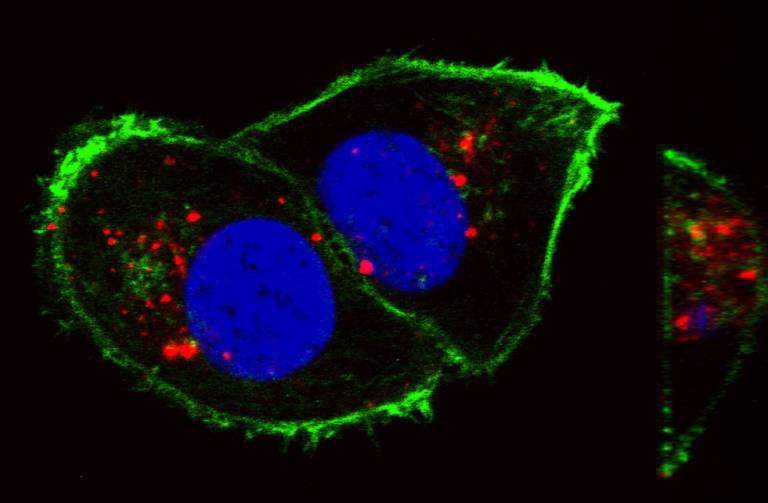Cells from the centre of tumours most likely to spread around the body
17 May 2021
Researchers from UCL, Francis Crick Institute, Royal Marsden, and Cruces University Hospital have found that cells from different parts of kidney tumours behave differently. Surprisingly, cells within the centre of a tumour are the most aggressive and more likely to metastasise.

Cancers can spread to other parts of the body, with cells taking hold as secondary tumours which make the disease much harder to treat. Understanding the mechanics of this spread (metastasis) could lead to new treatments that block this migration.
In their multidisciplinary study published in Nature Ecology and Evolution, scientists led by the Litchfield lab at UCL and the Turajlic, Swanton, and Bates labs at the Crick, analysed 756 cancer biopsy samples from different regions within tumours from the TRACERx Renal study.
They found that cells at the centre of tumours have a less stable genome and a higher potential to spread to secondary sites around the body. By contrast cells at the tumour edge had lower rates of metastasis, as well as lower rates of growth and genetic damage.
The results highlight a need to pay close attention to the tumour centre to understand how cancer spreads and to find the cancer cells of greatest threat to the patient. It also shows the importance of developing treatments that target the unique environmental conditions found within the tumour core, in order to successfully eliminate the most aggressive tumour cells.
The scientists also looked at how genetically different populations of cancer cells grow within a tumour. Using a unique map building tool to reconstruct the growth of tumour cells, they found that, while most tumours follow a pattern where populations of cells grow in the local area – like a plant growing up and outwards - two cases demonstrated a “jumping” pattern where cells took hold in a new region of the tumour by seemingly ‘jumping’ over other populations of tumour cells.
Samra Turajlic, head of the Crick’s Cancer Dynamics Laboratory, Consultant Medical Oncologist at the Royal Marsden NHS Foundation Trust and the Chief Investigator of TRACERx Renal, said: “Cancer spread is one of the biggest barriers to improving survival rates. In the context of the TRACERx Renal study we previously resolved the genetic make up of different tumour areas, but until now, there has been no understanding of how these differences relate spatially. The most critical question is the part of the tumour from which cancer cells break away and migrate making cancer incurable.
“Using this unique clinical cohort and a multidisciplinary approach, including mathematical modeling, we identified with precision the place in the tumour where genetic chaos emerges to give rise to metastases. Our observations shed light on the sort of environmental conditions that would foster emergence of aggressive behaviour. These findings are a critical foundation for considering how we target or even prevent distinct populations of cells that pose the biggest threat.”
The work was primarily funded by the Royal Marsden Renal Unit, the Biomedical Research Centre at the Royal Marsden and Institute of Cancer Research, Cancer Research UK, Rosetrees Trust, the National Institute for Health Research (NIHR) and the EU Framework Programme for Research and Innovation H2020.
 Close
Close

